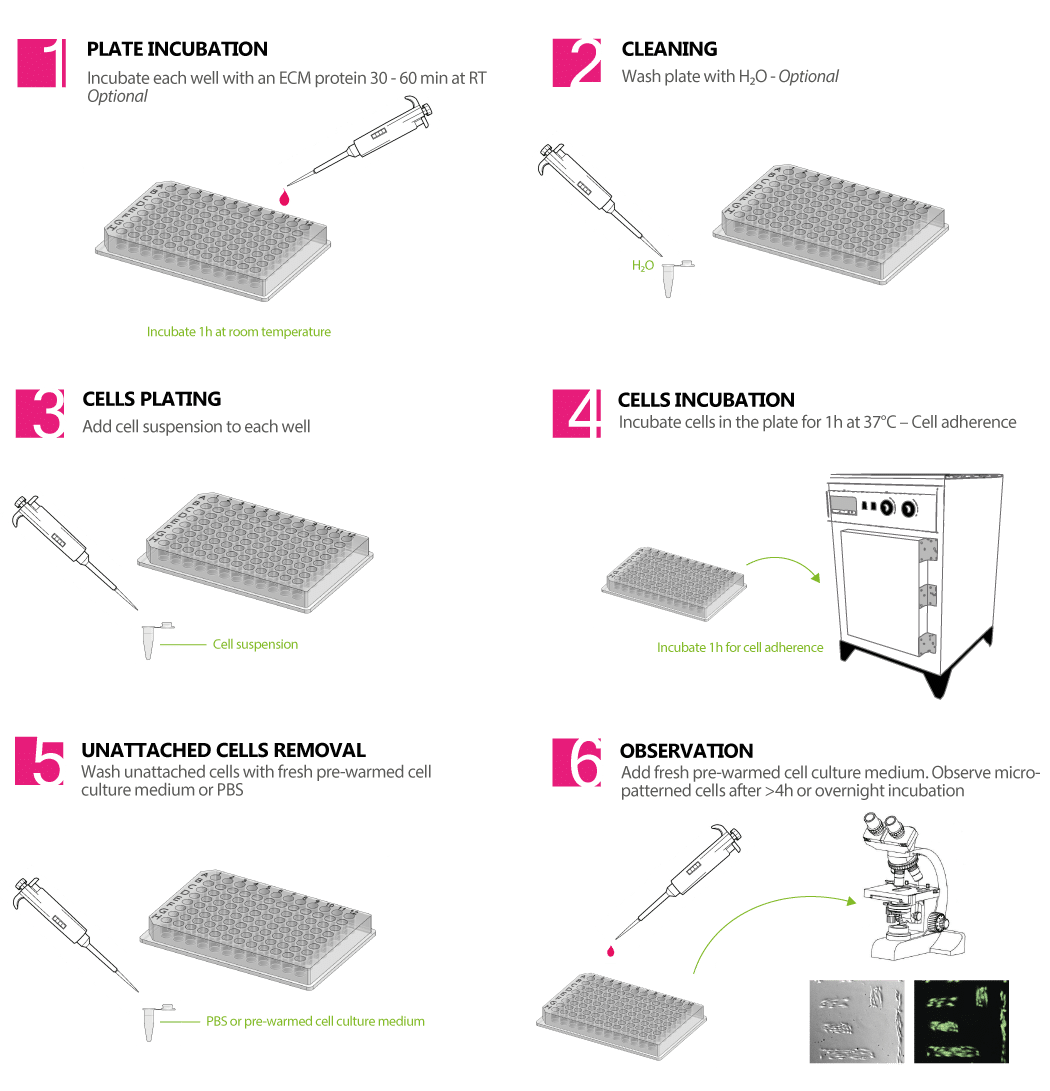MICROPATTERNED MULTIWELL PLATES 96 OR 384 WELLS
For high throughput screening and high content imaging of cell-based micropatterned assays
| 产品名称 | 微图案96孔板384孔板 |
| 品牌 | 4d cell |
| 产品货号 | 微图案96孔板384孔板 |
| 产品价格 | 现货询价 |
| 联系人 | 李先生 |
| 联系电话 | 18618101725 |
| 产品说明
MICROPATTERNED MULTIWELL PLATES 96 OR 384 WELLS For high throughput screening and high content imaging of cell-based micropatterned assays
micropatterned multi-well plates hold a perfectly organized and stable culture substrate aiming for cell normalization. Evenly distributed on adhesive patterns, cells have a controlled geometry allowing standardization of the assays.
> IMAGING OF SINGLE CELLS AND ORGANIZED CELL GROUPS
> ROBOT PIPETTE READY / SBS 96 OR 384-WELL PLATES
> HIGH-RESOLUTION IMAGING
> COMPATIBLE WITH IMAGING SOFTWARE COMMERCIALLY AVAILABLE
> MINIMAL AUTO-FLUORESCENCE HOW TO HANDLE YOUR 96 OR 384 MICROPATTERNED WELL PLATES 
FEATURES & BENEFITS
> micropatterned 96 well plates hold a patterned surface to control the 2D geometry of cells and standardize cellular assays.
> Each 96-well plate has the 6 standard shapes of : dots, squares, rectangles, triangles, lines, and grids, as well as sizes going from 10 to 150 ?m.
> We also offer the choice of a customizable solution (additional shapes and dimensions).
> The device is compatible with industrial standards for screening platforms (e.g. drug discovery).
> The bottom of the plate is made in glass and is coated with a stable anti-adhesive polymer to delimitate the borders of the patterns. This coating is resistant to oxidation, can be kept at room temperature for six months, and enables keeping the cells in patterns for several days.
Map of the standard Micropatterned 96 well plate
DRUG SCREENING
> High throughput and high content screening
ORGAN PHYSIOLOGY & DISEASE
> Migration of somatic and cancer cells > Cell shape standardization > Cardiomyocyte beating properties > Neural network and neuromuscular junction assays > Cell nucleus integrity > Nuclear plasticity > Co-culture > Wound healing > Cellular division > Cell-cell contact and interaction > Cell polarization > Frustrated phagocytosis > Cellular membrane protrusion assays (lamellipodia and filipodia)
BIOMOLECULAR IN VITRO MODELS
> Spatial auto-organization of macromolecules and organelles (at the microscale)
| |